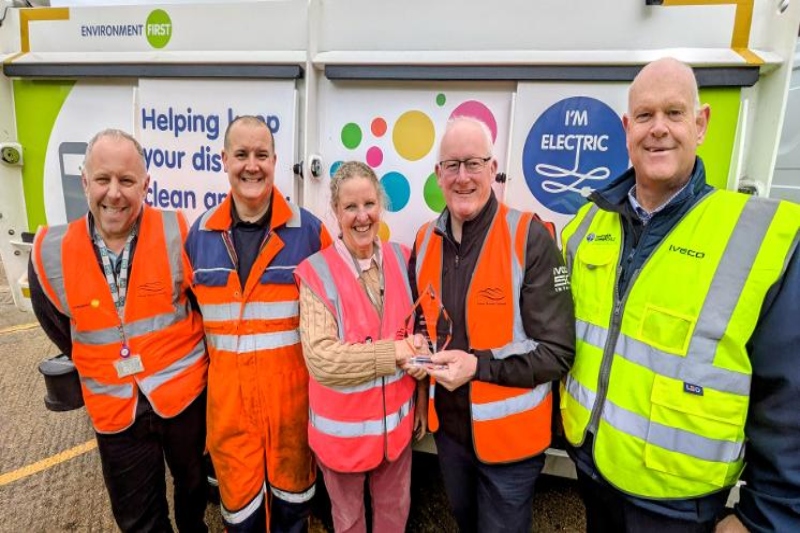Thus far 2020 has been a great year for electric vehicle (EV) sales. In April and May Tesla’s Model 3 was the best-selling model of car in the UK, whilst October figures show that despite an overall decrease in new car registrations of 1.6% year on year, sales in EVs increased dramatically across the board.
This is an exciting time for the EV industry as it looks poised to cross the chasm from early adopters to the mainstream. However, anyone that owns an EV knows that there is no point in having an EV if you don’t have access to charging infrastructure.
Zap Map data shows that at any one time, 5.8% of the UK’s EV charging points are offline. This is appallingly high and must be addressed as we move towards widespread adoption. As a nation, we must not only look to install more charging points, but also improve service across charging points if we are to attract new EV drivers, and this starts with more effective management of devices through Service Monitoring technology.
The egg is already hatching
Of course, there is always a slight chicken and egg situation in these scenarios – one side will argue that there is no point in buying an EV until the charging infrastructure is at an acceptable level, whilst the other will argue that there is no point in installing charging points if there are no cars to use them. In our current situation, the egg is already hatching as more and more people turn to EVs, meaning we need to act fast to improve our charging capability – both quantity and quality.
We were interested in finding out the UK’s plans for EV charging point rollout, so issued a Freedom of Information request to district councils to find out how they were planning on addressing this. The data tells a fascinating story. We hear a lot from the Government about its commitment to carbon neutral, a key part of which is driving electric. However, over the last 12 months councils have received just £27.8m in Government funding for EV charging infrastructure.
When analysing Government funding per capita, Scottish councils were way out in front, with £1.91 being spent per person. Welsh councils also fared well, with £0.91 of Government funding allocated per person. English councils received just £0.45 per person – less than a quarter of their Scottish counterparts and half of the Welsh figure.
Shockingly, 57% of UK councils received no funding for charging infrastructure at all from the Government in the last 12 months. Once again, English councils were the worst off, with 62% receiving no funding, rising to 67% when you exclude the generally well-funded London boroughs. Comparatively, just 6% of Scottish councils received no Government funding and just 38% of Welsh councils.
The impact of this lack of funding really shows when you look at the number of charging points planned for installation by the end of 2021. Overall, UK councils are planning to install 5,232 public charging points by the end of next year, but more than half of these (51%) will be deployed in London, with one new charging point planned for every 2,741 residents in the capital, whilst Scottish councils are planning a new charging point for every 6,449 residents. Meanwhile, English councils are planning to install one charging point for every 19,159 residents. The outlook is even worse for areas such as East of England – where I live – with just one new point per 38,420 residents.
Quality and quantity
Clearly, much more needs to be done to improve the number of charging points available. However, there is no point in having a greater number of chargers if they aren’t working. When speaking to early EV adopters as part of our report, the quality of the charging experience was a common bug bear.
This isn’t surprising, with Zap Map’s figure showing that more than 1-in-20 charging points are unavailable across the UK – if the same were true of petrol pumps, there would be delays at filling stations and uproar.
Of course, in the early days of a rollout, a slightly poorer quality is to be expected as there are always teething problems, and early adopters are generally forgiving of this. However, with the relatively low number of charging points planned by the end of 2021 – especially in England – this is set to become a huge problem as consumers increasingly buy electric.
This is something charging point vendors need to be more organised about, right now, as it will only get harder to provide a great service as they roll out more and more devices. If they are struggling to provide a great service with this relatively low number of charging points, it will only be worse when they have to look after thousands of new devices.
It is essential that charging point vendors deploy Service Monitoring technology. By doing so, they can gather intel on device uptime and usage to ascertain whether they have too few charging points in an area. They can spot faults and analyse whether this is an isolated incident or part of a wider problem. Instead of constantly having to react to angry customer complaints, they can take a much more proactive approach to maintenance and spot problems before they become a major issue.
As the UK moves towards EVs, it is imperative that we improve not only the quantity of charging points, but also the quality of the service they provide. This 5.8% of faulty charging points must be brought down to 1% at most, and it isn’t unreasonable to aim for 0.1% if they make use of Service Monitoring. This has to start now, before it is too late. With EVs booming in popularity, we are already playing catch up.
Pilgrim Beart is the cofounder and CEO of DevicePilot.







